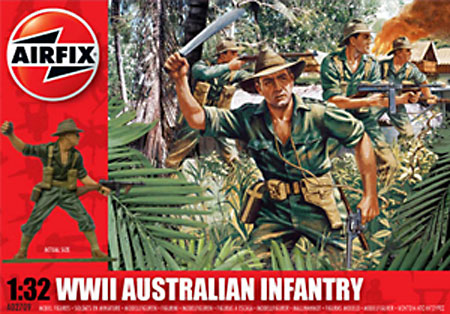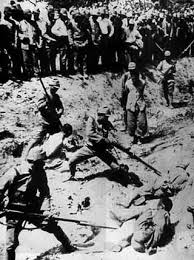
INDIA AND MAHATMA GANDHI Saviour or Sinner?

Gandhi became the leader of the India congress party determined to rid the sub-continent of British rule.Previously he had studied law in South Africa and had been a stretcher bearer in the Boer war but his return to india was marked by a non-violent resistance to Brituish rule he had embarked upon.

One example iof this was the march he organised to the sea; this venture was in defiance of the salt tax, many joined with him until with the sea reached they were then able to obtain salt from the drying out pools of water.
Relations betweeen the Indians and the British had greatly improved since the Indian mutiny (this was only a small confined mutiny of some soldiers) in which native soldiers had turned on their rulers by massacres in various places. In fact many Anglo-Indians now held positions in the Civil Service even in the courts of law where the ordinary indian could obtain justiice. Another important factor had been the ending of the practice within which the wife of an Indian nobleman was expected to join her dead husband on his funeral pyre (fire). Also the "Thuggies" had been beaten so that now a traveller could go safe in the knowledge he would not be strangled.
The Second World War gave Gandhi the opportunity he needed, a British army had been defeated in Malaya. It had been a disater for Great Britain, possibly the biggest military defeat in British history. Now Gandhi could and did demand independence,some indians joined those who had defeated that British army the Japanese and set up an independent fascist-like army under Japanese control. A member of the war time cabinet in Britain went to india to inform Gandhi that his ideas of an independent state would be granted by the end of the war; still Gandhi wasn't satisfied, he wanted nothing less than the immediate end of the Raj.

When told that this would mean chaos and massacres by the Japs who were massing on the Indian/Burma frontier he replied ."I prefer chaos".

The problem was that the British army was now retreating from the Japs in Burma trying and attempting to stop the Japs entering India and doing what they had done in China=millions of Chinese massacred young and old. But they (the British) were also fighting to free thousands of soldiers from the inhuman prison camps of the Japs.
 bayonet practice in china by japs
bayonet practice in china by japsThe British prime minister Winston Churchill despised Gandhi; he once said."It is alarming and nauseating to see Mr Gandhi a seditous middle class middle temple lawyer now posing as a Fakir of a type well kinown in India and the East.Striding halòf naked up the steps of the vice regal palace to parley on equal terms with the representative of the King.

If Churchill's policy of being against Indian independence had been adopted India would not have been given independence after the war; he remained against it there were never enough supporters in the Uk for his policy.India had been made into a modern country by British rule, an efficent civil service, a greatv rail system and a canal system with irrigation that were once arrid land; crops could be grown on what were deserts before; education up to university standard for all Indians had been introduced and theb health system vastly improved but the day of the Raj was coming to its end with possible trouble for the Indiand from the extremists of both Hindu and Muslim factions.

Lord Louis Mountbatten was the last viceroy of India.He had been the supreme allied commander in South east Asia during the Second World War; before he leftt India he appeared with Gandhi on a platform. From the crowd someone fired a shot at Gandhi and killed him With great prescence of mind Mountbatten shouted to the crowd that it hadn't been a Muslim who had killed Gandhi although at the time Mountbatten couldn't be sure but it prevented an immediate massacre.
Later Churchill could tell all of those who were against his indian policy tghat they were responsible for the thousands of deaths that took place once the Beritish army had departed and Hindu and Muslim were at each others throats.
It has to be wondered what would have hapopened had Britain been able to grant independence tyo Gandhi during the war and the Japanese had marched in as they would have done.
The Japanese army had gained a reputation for extremme inhuman cruelty wherever it went (this was on a par with the Axis troops in Europe but sometimes even worse; at Corregidor they had buried brave Americans who had fought to the last alive) and Gandhi's wish for chaos might have been something he hadn't reckoned on. It never took place because the Englisn were much wiser than Gandhi in the end.They stopped the Japs from committing mass slaughter at the battle of Impala; the British commander Bill "Slim" said"my men know that all our Indian possessions will revert to the Indians once the war is over but they fight like devils to keep the Japs from killing the Indian population".
The battle of Impala on the frontier between India and Burma was a glorious day for British commonwealth troops; white and black fought together to bring an end to the Japanese.
Lord Louis Mountbatten was like Gandhi the victim of assassins; in his case Irish ones many years later in Ireland. A disgraceful moment in Irish history for Mountbatten had been a man who always tried to use pacification insrtead of force, words instead of violence.
After the partition of the Indian sub-continent when Pakistan and India became seperate states Mrs Gandhi became the leader of the hindu state; she had to resign accused of corruption.
Gandhi based his idea on non-violent action as regards the principles of Henry Thoreau the Ameerican writer who refused to pay taxation during the American war against the Mexicans in 1845/46. The difference was that Thoreau had no following, he was alone in his protest and went to prison.
Gandhi was extremely lucky that it was the British army in India for as Ben-Gurion in Israel said "If during our time of terrorism it had been any other army except the British they would have wiped us out".
This was the greatest praise that an army and a people could have for it came from an enemy.They soldiered on to the end protecting Gandhi and the Indian people and got very little praise for it. 55,000 Japanese were killed att the battle of Imphal in India and although its name has not gone down in the annals of military valor there is no greater honour than to have been at Imphal. It was the battle, a fair battle, that ended in the truest sense the Jap army.What came after was tidying up. Violence was carried out by these soldiers so the likes of Gandhi could be non violent. Lets not forget them.
SOME WORDS
Bungalow, pyjamas, char (tea), curry , buckshee,tiffin (not breakfast but mid morning snack)thug (thuggie) Khaki, puttees,verandha, Madras cotton, dum dum(a place in India that a bu8llet was named after)
MODEL SOLDIERS FROM FIXED BAYONET Unpainted £5 each plus free painted model. Non-Dinpinti / 7 Euro + soldatino gratis con ogni ordine. This applies only to the FIXED BAYONET SOLDIERS which are of our unique manufacture or made for us.SEE list of what is available .All other soldiers listed here are just those we like and want to feature.We do not sell anything thats not on our list.




















